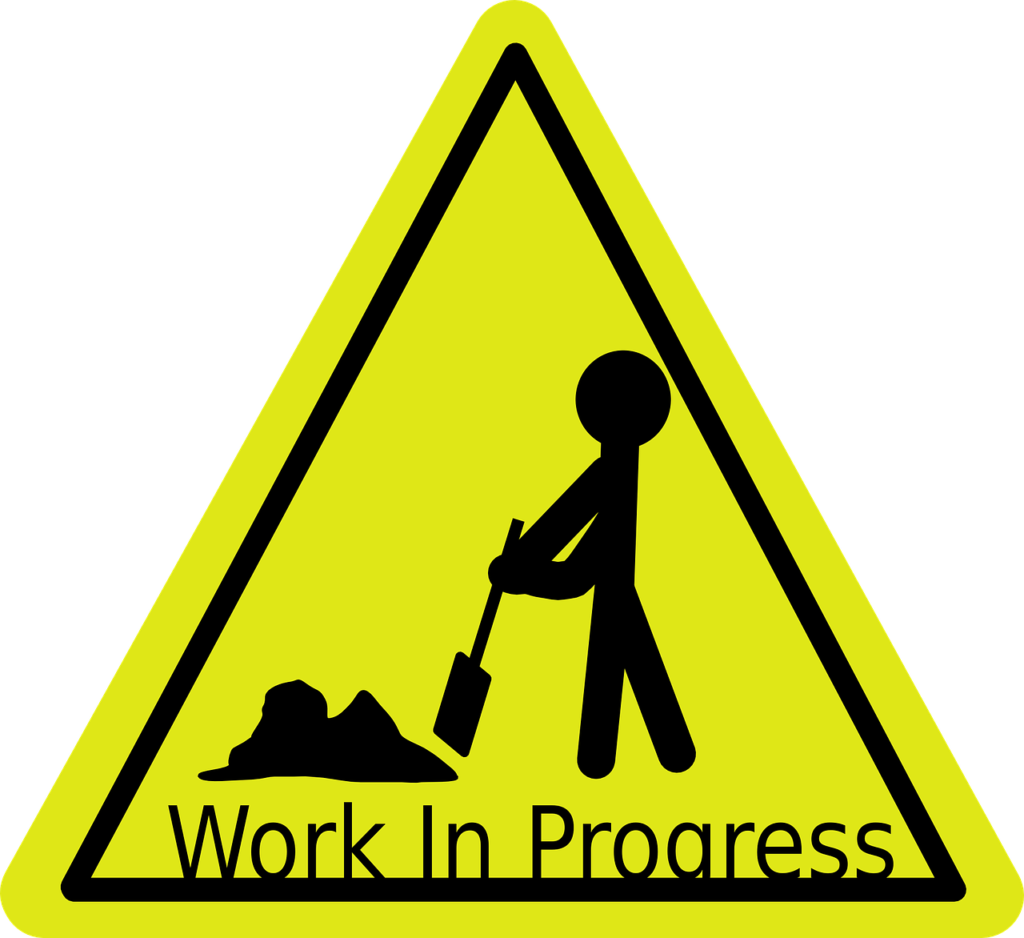
Table of Contents
Table of Contents
Introduction to Personalized Fitness Planning
- Importance of Personalization in Fitness
- Overview of Creating a Tailored Workout Plan
Understanding Personal Fitness
- Identifying Your Fitness Goals
- Assessing Your Enjoyment in Various Exercises
- Deciding on Your Preferred Gym Flexibility
- Evaluating Your Current Fitness Level
- Setting Short and Long-Term Goals
The Significance of a Customized Fitness Plan
- Advantages of Tailoring Your Fitness Plan
- How Individual Goals and Lifestyle Impact Fitness
Assessing Your Fitness Level
- Methods for Self-Assessment
- Tools and Tests for Measuring Fitness
Setting Realistic Fitness Goals
- The SMART Goal Setting Framework
- Examples of Achievable Fitness Goals
Selecting Appropriate Exercise Types
- Overview of Different Exercise Categories
- Matching Exercises to Your Fitness Goals
Crafting Your Workout Schedule
- Balancing Various Types of Workouts
- The Importance of Rest and Recovery
Monitoring Progress and Making Adjustments
- Techniques for Tracking Workouts
- Adjusting Your Fitness Plan for Continued Improvement
Maintaining Motivation
- Strategies for Staying Motivated
- Overcoming Common Plateaus
Conclusion and Next Steps – Recap of Key Takeaways – Encouragement for Starting the Fitness Journey
Frequently Asked Questions (FAQ) – Key Components of a Personalized Fitness Plan – Assessing Fitness Levels Before Starting – Setting Realistic and Achievable Fitness Goals – Criteria for Selecting Exercise Types – Structuring a Balanced Workout Schedule
Creating a Personalized Fitness Plan is a crucial step in achieving your fitness goals. When it comes to fitness, there is no one-size-fits-all approach. Everyone has different goals, preferences, and lifestyles, which is why creating a personalized fitness plan is so important. By tailoring your plan to your individual needs, you can ensure that you are making progress toward your goals while enjoying the process.
Assessing your current fitness level is the first step in creating a personalized fitness plan. This will help you understand where you are starting from and what areas you need to focus on. There are various tools and tests that you can use to measure your fitness level, including body composition analysis, cardiovascular fitness tests, and strength assessments.
Setting realistic fitness goals is another crucial step in creating a personalized fitness plan. By setting specific, measurable, achievable, relevant, and time-bound (SMART) goals, you can stay motivated and track your progress. Whether your goal is to lose weight, build muscle, or improve your endurance, setting goals that are tailored to your needs and abilities will help you achieve success.
Key Takeaways
- A personalized fitness plan is important for achieving your fitness goals and enjoying the process.
- Assessing your current fitness level and setting realistic goals are crucial steps in creating a personalized fitness plan.
- Choosing the right types of exercise, creating a workout schedule, monitoring progress, and staying motivated are key factors in achieving success with your personalized fitness plan.
Understanding Personal Fitness

To create an effective fitness plan, it’s important to have a clear understanding of your personal fitness goals and preferences. By tailoring your plan to your individual needs, you can maximize your chances of success and stay motivated throughout your fitness journey.
What is Your Goal?
The first step in creating a personalized fitness plan is to identify your goal. Do you want to lose weight, build muscle, improve your endurance, or simply maintain your current fitness level? Once you have a clear idea of what you want to achieve, you can select the types of exercise that will be most effective in helping you reach your goal.
What Do You Enjoy Doing?
When it comes to exercise, it’s important to find activities that you enjoy. This will help you stay motivated and make it easier to stick to your fitness plan over the long term. Whether you prefer running, swimming, weightlifting, or yoga, there are plenty of options to choose from. Experiment with different types of exercise until you find the ones that you enjoy the most.
How Much Flexibility Do You Prefer in the Gym?
Some people prefer to have a strict workout routine, while others prefer more flexibility. Consider how much structure you want in your fitness plan. Do you want to follow a set workout schedule, or do you prefer to mix things up and try new exercises as you go? By understanding your preferences, you can create a plan that works best for you.
What is Your Current Perceived Fitness Level?
It’s important to have a realistic understanding of your current fitness level. This will help you set realistic goals and select the right types of exercise for your needs. Consider how often you currently exercise, your level of endurance, and any physical limitations you may have. Be honest with yourself about your strengths and weaknesses.
What Are Your Short and Long-Term Goals?
In addition to your overall fitness goal, it’s important to set both short and long-term goals. Short-term goals can help keep you motivated and give you a sense of accomplishment along the way. Long-term goals can help you stay focused and committed to your fitness plan over time. Consider what you want to achieve in the next few weeks, months, and years, and write down your goals to help keep you accountable.
Importance of a Personalized Fitness Plan

When it comes to achieving your fitness goals, having a personalized fitness plan can make a significant difference. A personalized fitness plan is tailored to your individual goals, preferences, and lifestyle, providing you with a roadmap to success. Here are some benefits of tailoring a plan to your individual needs and goals:
Benefits of Tailoring a Plan
- Increased Motivation: When you have a plan that is tailored to your individual needs and goals, you are more motivated to stick to it. You are more likely to see results and feel a sense of accomplishment, which can keep you motivated to continue.
- Efficient Use of Time: A personalized fitness plan can help you make the most of your time in the gym. By selecting exercises that are specific to your goals, you can achieve results more efficiently.
- Reduced Risk of Injury: A personalized fitness plan takes into account your current fitness level and any limitations you may have. By selecting exercises that are appropriate for your level and needs, you can reduce the risk of injury.
- Long-Term Success: A personalized fitness plan is designed to help you achieve your short-term and long-term goals. By setting realistic goals and selecting exercises that are appropriate for your needs, you can achieve long-term success.
Individual Goals and Lifestyle
When creating a personalized fitness plan, it’s important to consider your individual goals and lifestyle. What works for one person may not work for another. Here are some factors to consider when tailoring a plan to your individual needs:
- Goal Setting: Setting realistic goals is an important part of creating a personalized fitness plan. Your goals should be specific, measurable, achievable, relevant, and time-bound (SMART).
- Exercise Preferences: What types of exercise do you enjoy? Do you prefer cardio, strength training, flexibility, or a combination of all three? Your exercise preferences should be taken into account when creating a personalized fitness plan.
- Time Constraints: How much time do you have to devote to exercise? A personalized fitness plan should take into account your schedule and time constraints.
- Fitness Level: Your current fitness level should be considered when creating a personalized fitness plan. You should select exercises that are appropriate for your level and needs.
In conclusion, a personalized fitness plan can help you achieve your short-term and long-term goals by tailoring a plan to your individual needs and goals. By setting realistic goals, selecting exercises that are appropriate for your level and needs, and considering your individual goals and lifestyle, you can achieve long-term success.
Assessing Your Fitness Level

Before creating a personalized fitness plan, it is important to assess your current fitness level. This will help you understand your strengths and weaknesses and determine the types of exercises that will be most effective for you.
How to Self-Assess
One way to self-assess your fitness level is to perform a basic fitness test. This can include exercises such as push-ups, sit-ups, squats, and a timed run or walk. You can also assess your flexibility by doing stretches such as touching your toes or a seated hamstring stretch.
Another way to assess your fitness level is to monitor your heart rate during exercise. This can be done by wearing a heart rate monitor or by taking your pulse manually. Your heart rate can give you an idea of your cardiovascular fitness level.
Tools and Tests for Measuring Fitness
There are several tools and tests that can be used to measure your fitness level. One common test is the body mass index (BMI) test, which calculates your body fat percentage based on your height and weight. Another test is the skinfold caliper test, which measures the thickness of your skin folds at various points on your body to estimate your body fat percentage.
Other tests that can be used to measure your fitness level include the VO2 max test, which measures your body’s ability to use oxygen during exercise, and the grip strength test, which measures your hand strength.
It is important to note that while these tests can be helpful in assessing your fitness level, they do not necessarily provide a complete picture of your overall health. It is always best to consult with a healthcare professional before beginning a new fitness program.
By assessing your fitness level, you can create a personalized fitness plan that is tailored to your individual needs and goals. This will help you achieve the best possible results and stay motivated throughout your fitness journey.
Setting Realistic Fitness Goals

To achieve success in your fitness journey, it is essential to set realistic goals that are specific, measurable, attainable, relevant, and time-bound. This type of goal-setting framework is known as SMART goal setting.
SMART Goal Setting
SMART stands for Specific, Measurable, Attainable, Relevant, and Time-bound. When setting fitness goals, it is crucial to be specific about what you want to achieve. For example, rather than saying “I want to lose weight,” a specific goal would be “I want to lose 10 pounds in the next three months.”
Measurable goals allow you to track your progress and determine whether you are on track to achieving your goal. An attainable goal is one that is challenging yet achievable based on your current fitness level and lifestyle. Relevant goals align with your overall fitness goals and what you enjoy doing.
Finally, time-bound goals have a specific deadline for completion. This helps you stay accountable and motivated to achieve your goal within a set timeframe.
Examples of Fitness Goals
Short-term fitness goals are achievable within a few weeks or months, while long-term goals may take six months to a year or longer to achieve. Here are some examples of both types of fitness goals:
Short-term goals:
- Run a 5K within the next two months.
- Complete 10 push-ups in a row by the end of the month.
- Attend a yoga class twice a week for the next four weeks.
Long-term goals:
- Lose 20 pounds in the next six months.
- Deadlift your body weight within the next year.
- Complete a half marathon in the next 12 months.
Remember, setting realistic fitness goals is essential to achieving success in your fitness journey. By using the SMART goal-setting framework and setting both short-term and long-term goals, you can stay motivated and on track to achieving your desired results.
Choosing the Right Types of Exercise

Overview of Exercise Types
When creating a personalized fitness plan, it’s important to choose the right types of exercise to achieve your goals. There are four main types of exercise: cardio, strength training, flexibility, and balance exercises.
Cardio exercises, such as running, cycling, and swimming, are great for improving endurance, burning calories, and strengthening your heart and lungs. Strength training exercises, such as weightlifting and bodyweight exercises, are essential for building muscle, increasing strength, and boosting metabolism. Flexibility exercises, such as yoga and stretching, can improve range of motion, reduce the risk of injury, and promote relaxation. Balance exercises, such as standing on one leg or using a balance board, can improve stability, and coordination, and prevent falls.
Selecting Exercises Based on Goals
When selecting exercises, it’s important to choose exercises that align with your goals. For example, if your goal is weight loss, you may want to focus on cardio exercises that burn calories and strength training exercises that build muscle. If your goal is to build muscle, you may want to focus on strength training exercises that target specific muscle groups. If your goal is to improve flexibility, you may want to focus on yoga and stretching exercises.
It’s also important to consider your fitness level and any physical limitations you may have. If you’re new to exercise, it’s important to start slowly and gradually increase the intensity and duration of your workouts. If you have any injuries or health conditions, it’s important to consult with your doctor or a qualified fitness professional before starting a new exercise program.
In summary, choosing the right types of exercise is essential for creating a personalized fitness plan that aligns with your goals, preferences, and lifestyle. By selecting exercises that are appropriate for your fitness level and physical limitations, you can reduce the risk of injury and achieve your desired results more efficiently.
Creating Your Workout Schedule

Once you have selected the right types of exercise to achieve your fitness goals, you need to determine how often to do them. Balancing different types of workouts throughout the week is important to avoid overworking certain muscle groups and to avoid burnout.
Balancing Workout Types
A balanced workout schedule should include a mix of cardio, strength training, flexibility, and balance exercises. For example, if your goal is weight loss, you might aim for 3-5 days of cardio per week, 2-3 days of strength training, and 1-2 days of flexibility and balance exercises. On the other hand, if your goal is muscle building, you might focus more on strength training and aim for 3-4 days per week, with 1-2 days of cardio and 1-2 days of flexibility and balance exercises.
It’s important to note that everyone’s schedule and preferences will differ. You may prefer to do all of your cardio on one day and all of your strength training on another day. As long as you are getting the recommended amount of exercise per week, the schedule can be tailored to your preferences.
Importance of Rest and Recovery
Rest and recovery days are just as important as workout days. Your muscles need time to recover and rebuild after a workout, and overworking them can lead to injury. Aim for at least one or two rest days per week, and make sure to listen to your body. If you are feeling fatigued or sore, take an extra rest day or do a lighter workout.
In addition to rest days, make sure to incorporate stretching and foam rolling into your routine to aid in muscle recovery. This can help reduce soreness and improve flexibility.
Overall, creating a workout schedule that balances different types of exercises and includes rest and recovery days is crucial for achieving your fitness goals while avoiding injury and burnout.
Monitoring Progress and Adjusting Your Plan

Once you’ve created your personalized fitness plan, it’s important to monitor your progress to ensure that you’re achieving your goals. Tracking your workouts and progress can help you stay motivated and make adjustments to your plan as needed.
Tracking Workouts
One way to track your workouts is to keep a workout journal or log. You can record the exercises you performed, the number of sets and reps, and the weight or resistance used. You can also track your cardio workouts by recording the distance, time, and intensity of your workouts.
Another way to track your progress is to use a fitness tracker or app. These tools can help you monitor your heart rate, calorie burn, and other metrics during your workouts. Some fitness trackers can also track your sleep and daily activity levels, which can provide additional insights into your overall health and fitness.
Adjusting Your Fitness Plan
As you progress in your fitness journey, you may need to adjust your plan to continue making progress towards your goals. One way to do this is to increase the intensity or duration of your workouts. For example, you can increase the weight or resistance used during strength training exercises, or you can increase the speed or incline during cardio workouts.
You may also need to adjust your plan if you experience a plateau or if you encounter an injury or other setback. In these cases, it’s important to modify your plan to avoid further injury or setbacks. This may involve reducing the intensity or duration of your workouts or focusing on different types of exercises.
Overall, monitoring your progress and adjusting your plan as needed can help you stay on track toward achieving your fitness goals. By staying flexible and adapting your plan as needed, you can continue making progress and improving your overall health and fitness.
Staying Motivated

Staying motivated can be a challenge when it comes to maintaining a consistent fitness routine. However, there are several tips and strategies that can help you stay on track and achieve your goals.
Tips for Staying Motivated
- Set realistic goals: Setting achievable goals can help you stay motivated and focused. Make sure your goals are specific, measurable, attainable, relevant, and time-bound (SMART).
- Find an accountability partner: Having someone to hold you accountable can be a great motivator. Partner up with a friend or hire a personal trainer to help you stay on track.
- Mix it up: Doing the same workout routine can get boring. Try new exercises or switch up your routine to keep things interesting.
- Reward yourself: Rewarding yourself for achieving your goals can be a great motivator. Treat yourself to a massage or a new workout outfit as a reward for reaching a milestone.
- Keep a workout log: Tracking your progress can help you stay motivated. Keep a log of your workouts, including the exercises you do, the number of reps and sets, and the weight you use.
Overcoming Plateaus
Plateaus can be frustrating when it comes to fitness. Here are some tips to help you overcome them:
- Change up your routine: Try new exercises or increase the intensity of your workouts to challenge your body and break through a plateau.
- Increase your rest time: If you’re not giving your body enough time to recover, it can lead to a plateau. Increase your rest time between sets or take a few extra days off to allow your body to recover.
- Adjust your diet: Your diet plays a crucial role in your fitness journey. Make sure you’re eating a balanced diet that includes plenty of protein, healthy fats, and complex carbohydrates to fuel your workouts and support muscle growth.
Community and Support
Having a supportive community can be a great motivator when it comes to fitness. Here are some ways to build a supportive fitness community:
- Join a fitness class: Joining a fitness class can be a great way to meet like-minded individuals who share your fitness goals.
- Use social media: Social media can be a great tool for building a fitness community. Join fitness groups or follow fitness influencers to connect with others who share your interests.
- Get your family and friends involved: Encourage your family and friends to join you in your fitness journey. Having a support system can help you stay motivated and on track.
Creating a Personalized Fitness Plan

When it comes to fitness, there is no one-size-fits-all approach. Everyone has different goals, preferences, and lifestyles that affect their fitness journey. That’s why creating a personalized fitness plan is crucial to achieving your desired results. In this article, we’ll guide you through the process of creating a personalized fitness plan that fits your needs.
Importance of a Personalized Fitness Plan
A personalized fitness plan is essential for achieving your fitness goals. By tailoring your plan to your individual goals, preferences, and lifestyle, you’ll be more likely to stick with it and see results. A personalized fitness plan can also help prevent injury and ensure that you’re getting the most out of your workouts.
Assessing Your Fitness Level
Before you start any fitness plan, it’s important to assess your current fitness level. This will help you determine where you’re starting from and what areas you need to focus on. There are several tools and tests you can use to measure your fitness level, such as body composition analysis, cardiovascular endurance tests, and strength tests.
Setting Realistic Fitness Goals
Setting realistic and achievable fitness goals is crucial to staying motivated and on track. When setting fitness goals, it’s important to use the SMART goal-setting method, which stands for Specific, Measurable, Achievable, Relevant, and Time-bound. Examples of short-term fitness goals include running a 5k, doing 10 push-ups in a row, or losing 5 pounds. Long-term fitness goals could be running a marathon, deadlifting twice your body weight, or losing 50 pounds.
Choosing the Right Types of Exercise
There are four main types of exercise: cardio, strength training, flexibility, and balance exercises. Each type of exercise serves a different purpose and can help you achieve different goals. When selecting exercises for your fitness plan, it’s important to consider your goals and preferences. For example, if your goal is weight loss, you may want to focus more on cardio and high-intensity interval training. If your goal is muscle building, you may want to focus more on strength training.
Creating Your Workout Schedule
Creating a workout schedule is important to ensure that you’re getting enough exercise and giving your body enough time to rest and recover. When creating your workout schedule, it’s important to balance different types of exercises throughout the week and include rest and recovery days. For example, you may want to do cardio on Monday, Wednesday, and Friday, strength training on Tuesday and Thursday, and yoga or stretching on Saturday.
Monitoring Progress and Adjusting Your Plan
Tracking your progress is important to see how far you’ve come and make necessary adjustments to your plan. There are several ways to track your progress, such as keeping a workout journal, taking progress photos, or using fitness apps. It’s also important to adjust your plan as needed to ensure that you’re continuing to challenge yourself and see results.
Staying Motivated
Staying motivated is key to sticking with your fitness plan and achieving your goals. There are several tips for staying motivated, such as finding a workout buddy, setting rewards for yourself, and trying new exercises or classes. It’s also important to remember that progress takes time and to celebrate small victories along the way.
Frequently Asked Questions

What key components should be included in a personalized fitness plan?
A personalized fitness plan should include an assessment of your current fitness level, realistic and achievable fitness goals, the right types of exercise for your goals, a balanced workout schedule, and a way to track your progress and make adjustments as needed.
How can one assess their fitness level before starting a personalized plan?
There are several tools and tests you can use to measure your fitness level, such as body composition analysis, cardiovascular endurance tests, and strength tests.
How do you set realistic and achievable fitness goals?
When setting fitness goals, it’s important to use the SMART goal-setting method, which stands for Specific, Measurable, Achievable, Relevant, and Time-bound. Examples of short-term fitness goals include running a 5k, doing 10 push-ups in a row, or losing 5 pounds. Long-term fitness goals could be running a marathon, deadlifting twice your body weight, or losing 50 pounds.
What criteria should be used to select the right types of exercise for a fitness plan?
When selecting exercises for your fitness plan, it’s important to consider your goals and preferences. For example, if your goal is weight loss, you may want to focus more on cardio and high-intensity interval training. If your goal is muscle building, you may want to focus more on strength training.
How should a workout schedule be structured to balance exercise types and recovery?
When creating your workout schedule, it’s important to balance different types of exercises throughout the week and include rest and recovery days.





